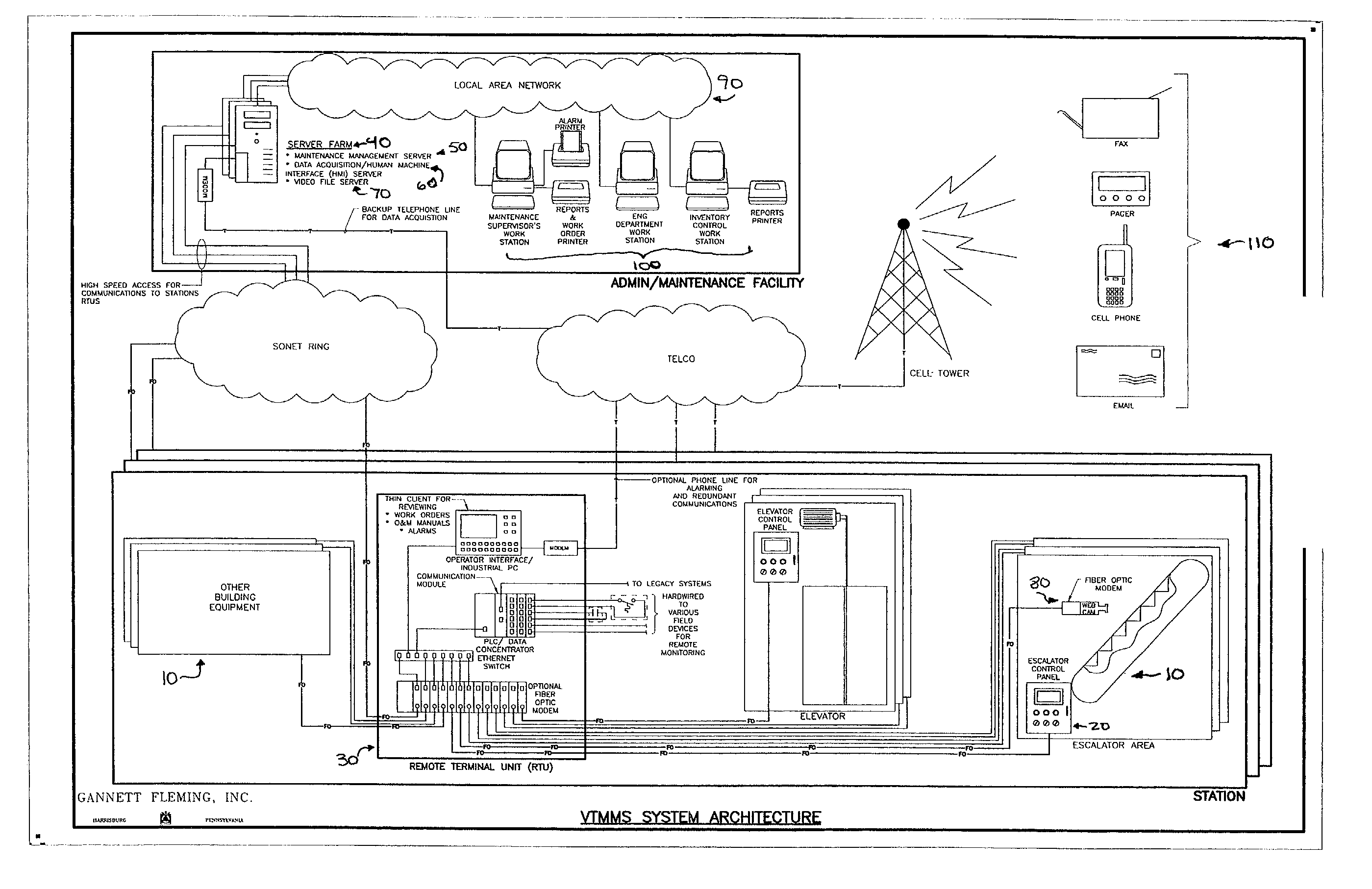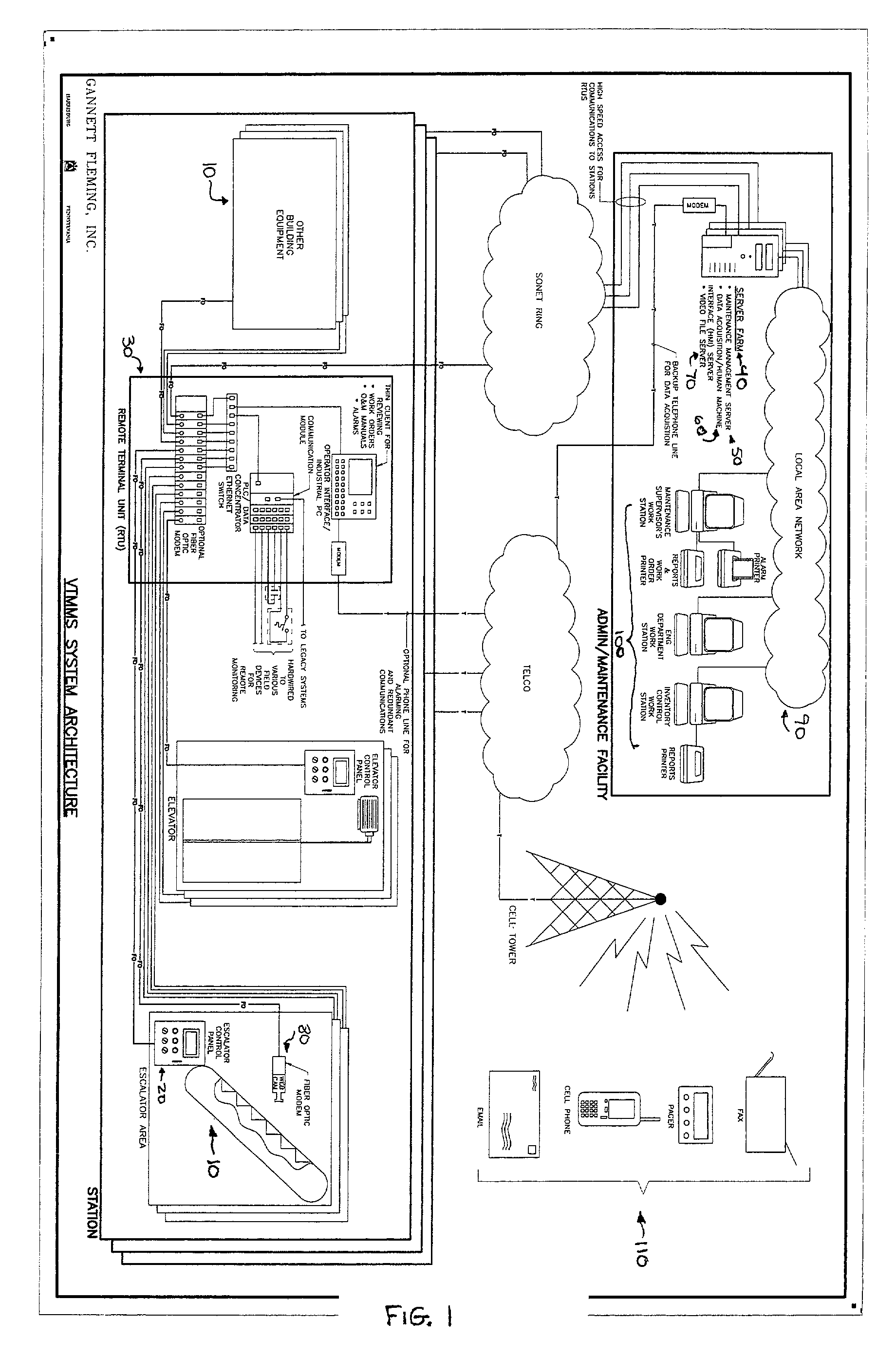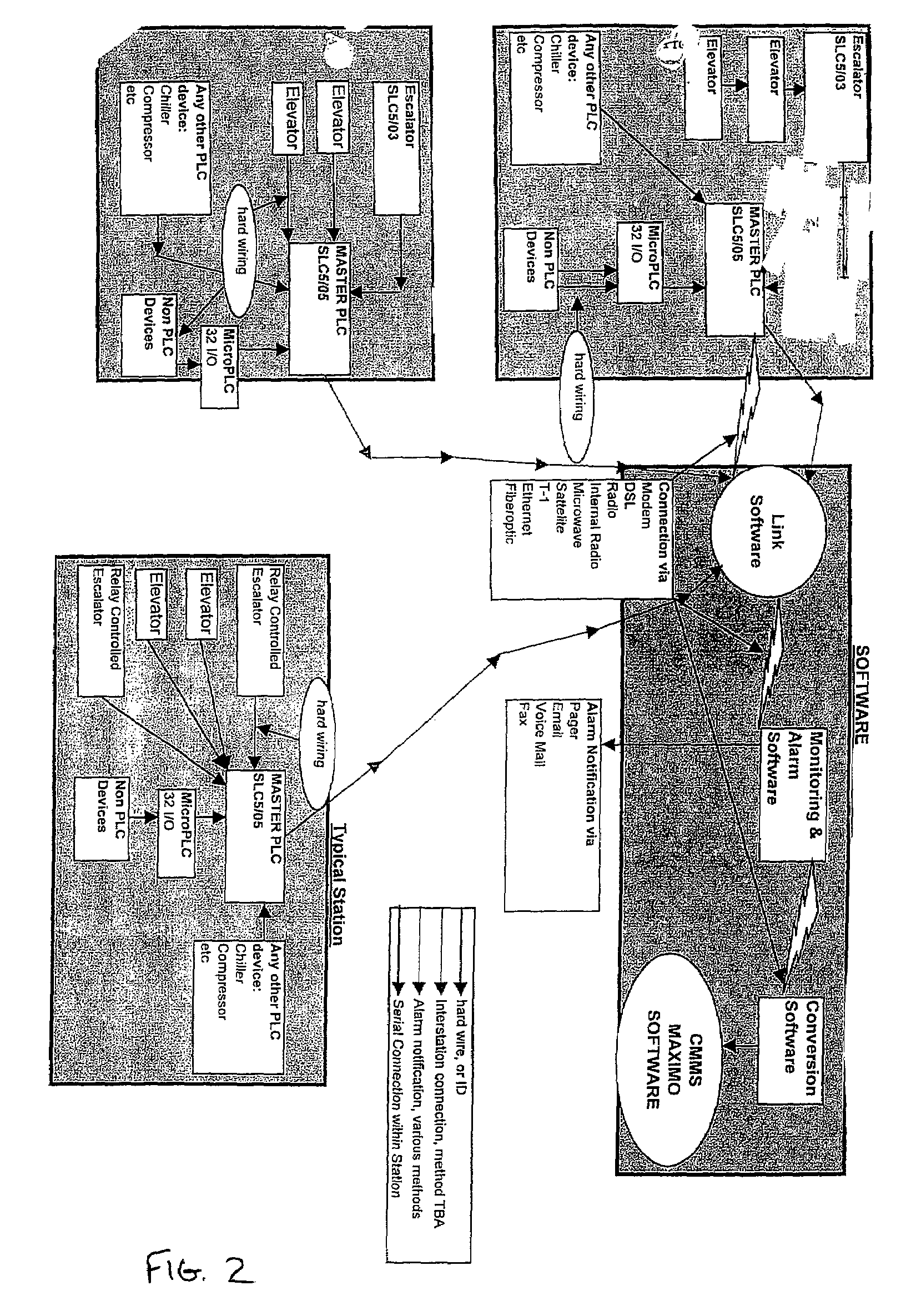System and method for remote monitoring and maintenance management of vertical transportation equipment
a technology for remote monitoring and maintenance management, applied in the direction of television systems, testing/monitoring control systems, instruments, etc., can solve the problems of increased repair costs for owners, immediate inconvenience, and difficulty in reliable operation of vertical transportation equipment. , to achieve the effect of convenient us
- Summary
- Abstract
- Description
- Claims
- Application Information
AI Technical Summary
Benefits of technology
Problems solved by technology
Method used
Image
Examples
Embodiment Construction
[0021]FIG. 1 shows a schematic illustration of one embodiment of the VTMMS. In this embodiment, vertical transportation equipment 10 is provided in the form of one or more escalators and / or elevators. Preferably, each unit of transportation equipment 10 includes its own equipment controller 20. The equipment controller 20 is preferably a programmable logic control (“PLC”). In a preferred embodiment, the equipment controllers 20 are preferably Allen Bradley SLC 5 / 03 PLC controls. A key advantage to this particular controller selection is that all known escalator suppliers can supply their standard escalators with this particular PLC. Older vertical transportation equipment units which have non-PLC equipment controllers are adapted for inclusion in the VTMMS by one of several measures: hardwiring the equipment to the PLC inputs and outputs (I / O) of an RTU; installing a gateway in the RTU to communicate serial to the equipment; or, installing known smart field devices which communicate...
PUM
 Login to View More
Login to View More Abstract
Description
Claims
Application Information
 Login to View More
Login to View More - R&D
- Intellectual Property
- Life Sciences
- Materials
- Tech Scout
- Unparalleled Data Quality
- Higher Quality Content
- 60% Fewer Hallucinations
Browse by: Latest US Patents, China's latest patents, Technical Efficacy Thesaurus, Application Domain, Technology Topic, Popular Technical Reports.
© 2025 PatSnap. All rights reserved.Legal|Privacy policy|Modern Slavery Act Transparency Statement|Sitemap|About US| Contact US: help@patsnap.com



